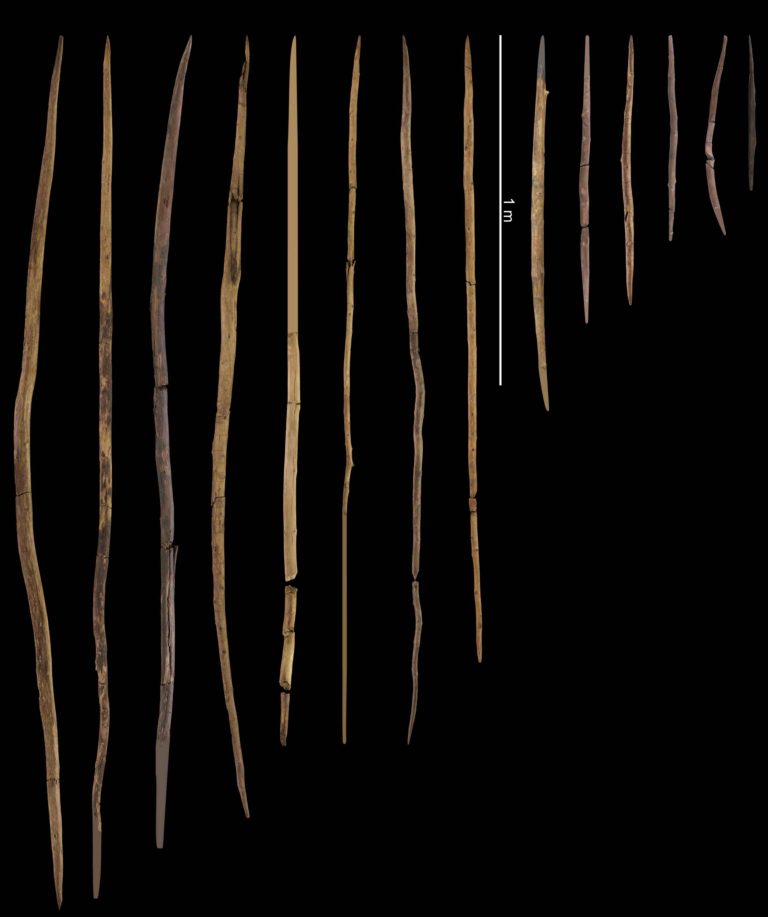Dating of Schöningen spears revised to 200,000 years
World’s oldest complete wooden hunting weapons from Schöningen, Germany, are 100,000 years younger than previously claimed
The town of Schöningen in Lower Saxony in Germany is world-renowned in archaeology: the most impressive arsenal of hunting weapons preserved from the Palaeolithic period was uncovered here. In recognition of the site’s importance for understanding the evolution of human hunting skills, the “paläon” research museum was established here in 2013. Together with geo- and environmental scientists with a wide range of expertise, archaeologists from the Leibniz-Zentrum für Archäologie (LEIZA) and Johannes Gutenberg University Mainz (JGU) have now, for the first time, presented age data on finds from the so-called Spear Horizon. Also involved in the field work were scientists from the JGU Institute of Geography. After an earlier correction of the age of the famous hunting spears from 400,000 to 300,000 years, the new data show that the age of the Spear Horizon must be revised again by around 100,000 years to an age of 200,000 years. The researchers recently published their results in Science Advances.
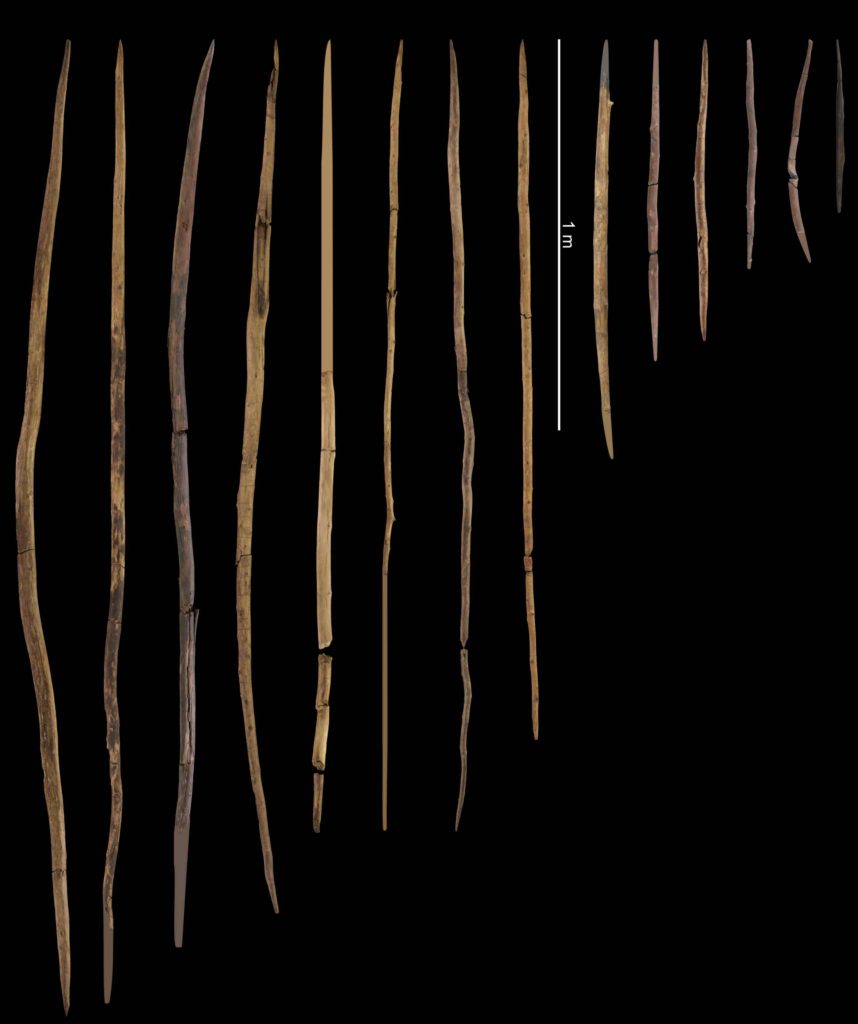
Unique depositional conditions at Schöningen favored the preservation of wooden spears and other wooden implements, along with the remains of hunted prey, which primarily consisted of horses. At the time of the discovery of the first spears in the mid-1990s, their age was estimated to be about 400,000 years. This was later revised to about 300,000 years. However, these relative estimates were based on the ages of overlying and underlying sediment layers, not on data obtained directly from the Spear Horizon itself. Due to these uncertainties, differing age estimates have been debated for many years.
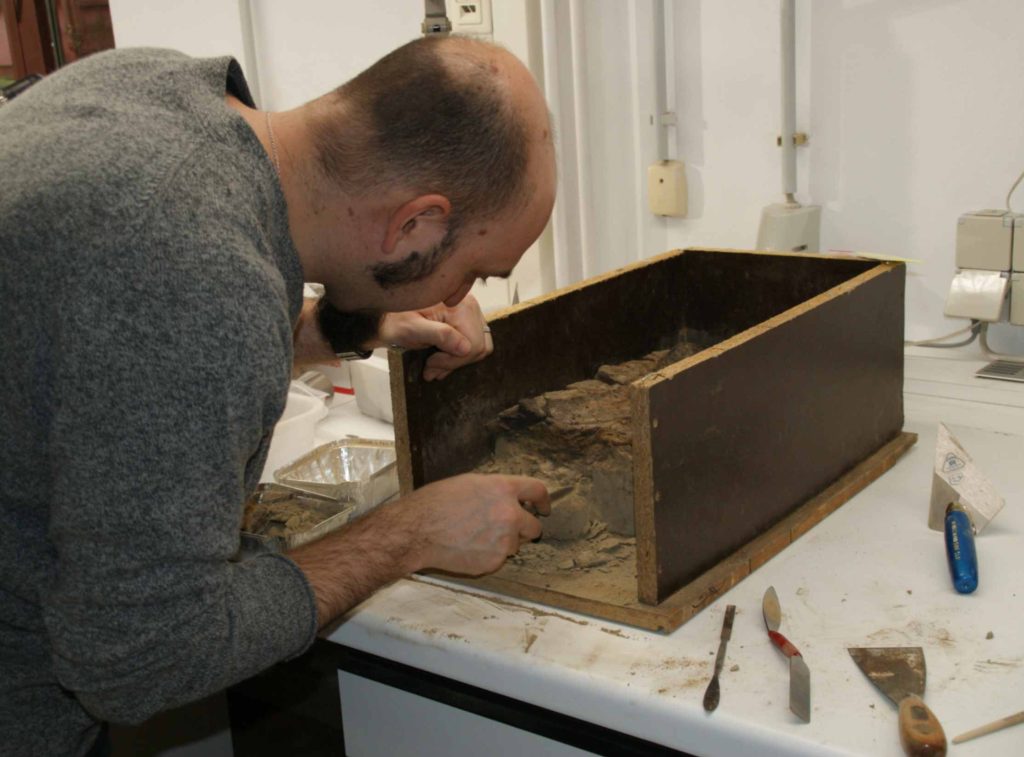
Refined analytical method leads to new age estimation
Central to the new dating approach is an analytical method known as amino acid racemization, refined in recent years by a research group led by Professor Kirsty Penkman at the University of York in England as part of her EQuaTe project. This biochemical approach takes advantage of the fact that amino acids can occur in two forms that are mirror images of one another: a left-handed L-form and a right-handed D-form, based on the arrangement of their molecular bonds. In living organisms, L-form amino acids predominate. After death, L-form amino acids are slowly racemized, or converted, into D-forms, until both forms are present in equal proportions. If the original protein is retained within a closed system, the ratio of L- and D-amino acids therefore enables age estimation.
At Schöningen, the degree of racemization was determined from the opercula of small freshwater snails of the genus Bithynia. Opercula are calcite structures that act as a lid to prevent drying out when the snail is inside. These calcites can preserve amino acids for millennia. The samples examined in the new study came from sediment blocks recovered during the original large-scale excavations at Schöningen. Additional racemization samples of horse teeth and shells of small crustaceans processed as part of the study in combination support a young age for the site.
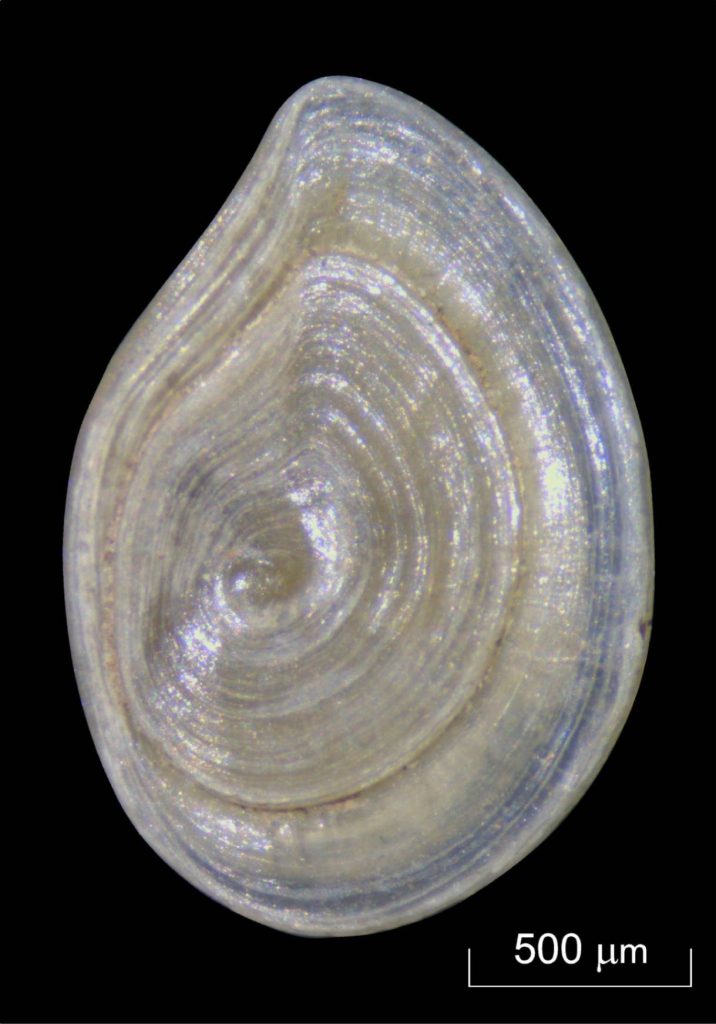
Contribution to a better understanding of human evolution
The younger age estimate in no way diminishes the significance of the Schöningen finds but adds to the site’s importance as a marker of human behavioral evolution. With its revised age, Schöningen now dates to the Middle Palaeolithic period and the time of early Neanderthals. Apart from the spears, clear evidence for hunting also stands out compared to other sites from earlier periods. Throughout all seasons of the year, small groups of horses were repeatedly killed along the shoreline of a former lake in Schöningen – a total of more than 50 horses, as studies by the MONREPOS Archaeological Research Center and Museum for Human Behavioral Evolution, a LEIZA facility near Neuwied, Germany, have demonstrated in a previous project.
The specialized hunting of primarily one animal species has been documented across Europe for around 200,000 to 250,000 years. With the new dating, Schöningen joins a series of findings from other sites that illustrate a marked acceleration of hunting capabilities. According to the authors of the recent paper, the specialized hunting of smaller prey groups of mainly one animal species was more promising than other encounter hunting strategies. These findings also suggest well-coordinated hunting parties in which the participating individuals performed coordinated, clearly defined tasks to ensure a successful hunt. The degree or “quality” of human cooperation apparently reached a new, higher level about 200,000 years ago.
Press release from the Johannes Gutenberg University Mainz (JGU) and the Leibniz-Zentrum für Archäologie (LEIZA)
World-famous Schöningen spears are 100,000 years younger than previously claimed, new research suggests
Scientists have analysed amino acids locked in snail shells to establish a new age for the world’s oldest complete wooden hunting weapons
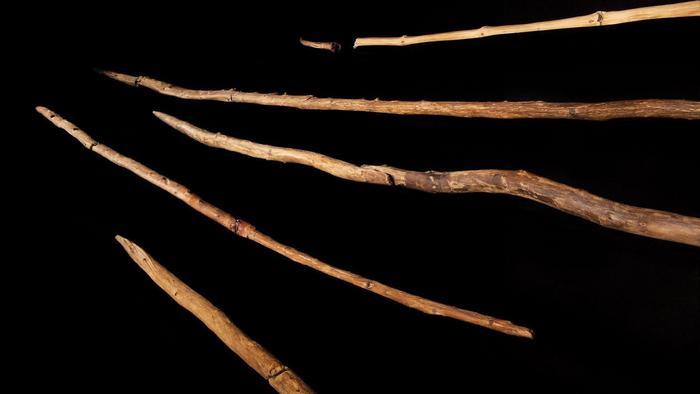
The study used recent advances in a dating method known as “amino acid geochronology” – a technique refined by a research group led by Professor Kirsty Penkman at the University of York.
By analysing amino acids locked within snail shells buried within the sediment that preserved the spears, the research team was able, for the first time, to directly date material from the exact layer of earth in which the spears were found.
At the time of the discovery of the first spears in the mid-1990s, they were thought to be around 400,000 years-old, but that estimate was later revised to approximately 300,000 years. However, these age estimates were based on analysis of the underlying sediment layers.
The researchers, whose findings are published in the journal Science Advances, emphasise that this younger age estimate does not diminish the importance of the Schöningen discoveries. Instead, they say it further highlights the site’s importance as a marker in the study of human evolution.
Co-author of the paper, Professor Kirsty Penkman, from the Department of Chemistry at the University of York, said:
“This new dating evidence places the remarkable Schöningen spears within the Middle Palaeolithic period, the time of the Neanderthals.”
First author Dr. Jarod Hutson of the Leibniz Zentrum für Archäologie (LEIZA) in Mainz, Germany, said
“The Schöningen spears are so significant because, unlike older sites, they offer compelling evidence of sophisticated hunting strategies which would have required better cognitive abilities and the development of more complex communication, planning and social structures. The updated timeline for Schöningen now aligns it with a growing number of sites which together indicate a significant leap in early human hunting capabilities during this period.”
The site at Schöningen, Lower Saxony, was located at a lakeside where rapid sedimentation caused the exceptional preservation of organic materials, including the impressive arsenal of hunting weapons and other wooden implements, along with the butchered remains of hunted prey, which primarily consisted of horses.
Previous archaeological investigations analysing these horse remains, notably by the MONREPOS Archaeological Research Centre and Museum for Human Behavioural Evolution near Neuwied, a LEIZA department closely linked to the Johannes Gutenberg University in Mainz, have revealed evidence of seasonal hunting of small groups of horses along the shores of the ancient lake, with over 50 individual animals documented.
These findings point towards well-organised hunting parties, where individuals undertook coordinated and specific roles to ensure successful kills of larger and more challenging prey. The redating of the Schöningen site implies a notable increase in the level and complexity of human cooperation by approximately 200,000 years ago.
Amino acid geochronology – the biochemical approach central to the redating of the site – takes advantage of the fact that amino acids, the building blocks of protein, come in two forms: left-handed and right-handed versions of the same molecule.
When a creature is alive, its proteins are made only of the “left-handed” version. But after it dies, some of these slowly change into the “right-handed” version. By measuring how much of each version is left in certain fossils, scientists can work out how long ago that creature lived. The researchers looked at the tiny “trapdoors” (called opercula) of small freshwater snails called Bithynia. These little doors are made of a mineral that traps the amino acids inside for millions of years, like a perfect time capsule. The scientists took samples of these snail trapdoors from the same layer of earth where the famous spears were found.
They compared the amounts of the two types of amino acids in the opercula from Schöningen with those from other opercula found across northern Europe. Another research team in Madrid carried out further tests on horse teeth and tiny organisms called ostracods also found in the same sediment layer, and the results backed up the idea that the Schöningen site is younger than previously thought.
Co-author of the study, Ellie Nelson, a PhD student in the Department of Chemistry at the University of York added:
“Groundbreaking refinements in amino acid geochronology are allowing us to date Palaeolithic archaeological sites with greater accuracy than ever before, reshaping our understanding of this pivotal era in human history. This innovative method allows us to measure time signals trapped within the crystals of fossilised shell and tooth enamel in any part of the world across a range of archaeological sites. The enhanced accuracy holds immense potential for unlocking the long-held secrets of the Palaeolithic.”
Bibliographic information:
J. M. Hutson et al., Revised age for Schöningen hunting spears indicates intensification of Neanderthal cooperative behavior around 200,000 years ago, Science Advances 11: 19, 9 May 2025, DOI: DOI: 10.1126/sciadv.adv0752
Press release from the University of York.

